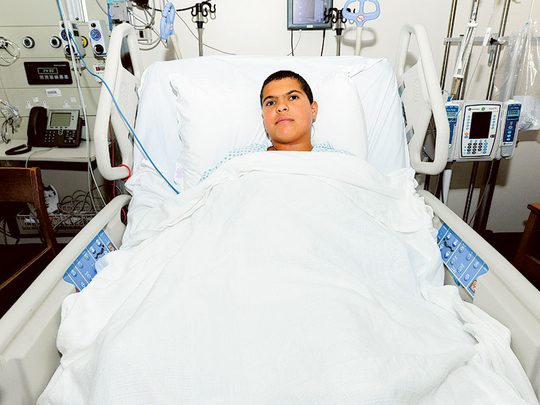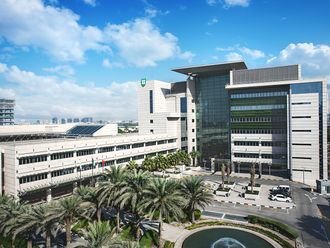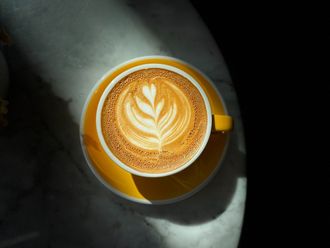
Abu Dhabi: A minimally invasive procedure has allowed a 15 year old in the capital to regain normal heart function without having to undergo open heart surgery.
Abdul Rahman Nasser, an Egyptian resident, underwent a transcatheter heart valve replacement in September and has reported no complications since the procedure, doctors at Shaikh Khalifa Medical City (SKMC) told Gulf News on Sunday.
It is the first time the surgery, known as transcatheter pulmonary valve replacement, has been performed in the UAE. With it being available at the SKMC, patients who undergo it will not have to face the possible complications of open heart procedures, said Dr Abdul Karim Duke, consultant paediatric cardiologist and electrophysiologist at the hospital.
Nasser was born with a complex heart condition in which both the blood vessel that supplies blood to his body (aorta) and the vessel that supplies oxygenated blood to his lungs (pulmonary artery) originated from one heart chamber, the right ventricle, instead of two. By the age of six, he had already undergone four open heart procedures.
“Each time the chest is opened up for an open heart operation, it strains the organ and repeated procedures end up damaging the heart,” Dr Duke explained.
Nasser was then admitted this September because a valve that was supplying blood from the right ventricle to his pulmonary artery had become leaky.
“The loss of blood due to the leak forces the heart to pump harder, and also dilates the organ significantly. Nasser was showing these symptoms already, and they can lead to heart failure over time. So we studied the possibility of replacing the leaky valve without opening up his chest,” Dr Duke said.
“We were especially reluctant to do further surgery as he has had many already. The risks increase substantially because the scar tissue at the surgical incision site and around the heart can make access extremely difficult and impair healing,” he added.
A 20-person team comprising surgeons, nurses, anaesthetists, radiographers and other staff worked together to perform the two-hour operation.
“With this technique, a catheter [thin, hollow tube] is inserted into a vein and pushed up to the heart. The replacement heart valve [made from a cow’s jugular vein] is attached to a stent [wire mesh tube] that expands with the help of a balloon. When it is time to get the new valve, it is placed on to the inserted catheter and guided by radiology through the vein to the heart,” explained Dr Magdi Tofeig, FRCP, consultant paediatric cardiologist and interventionist at SKMC.
Following the surgery, Nasser was discharged within 48 hours.
“Open heart surgery requires at least a week or two of hospitalisation, and eventually weakens the heart. This relatively new procedure has a much quicker recovery time for the patient, and because heart valves need to be replaced every five to ten years, it is the preferred alternative to open heart procedures,” Dr Duke said.












